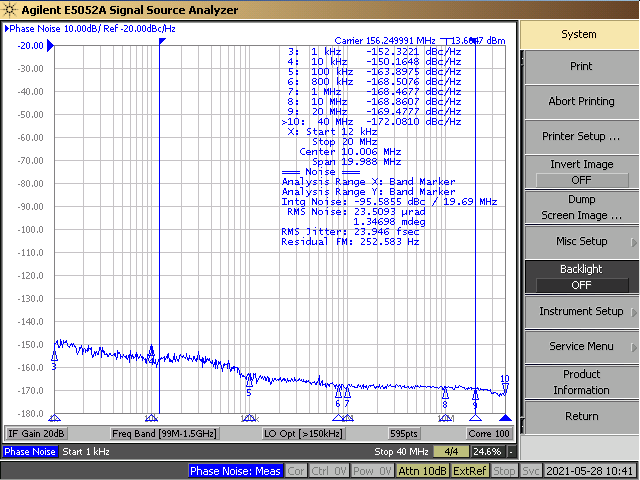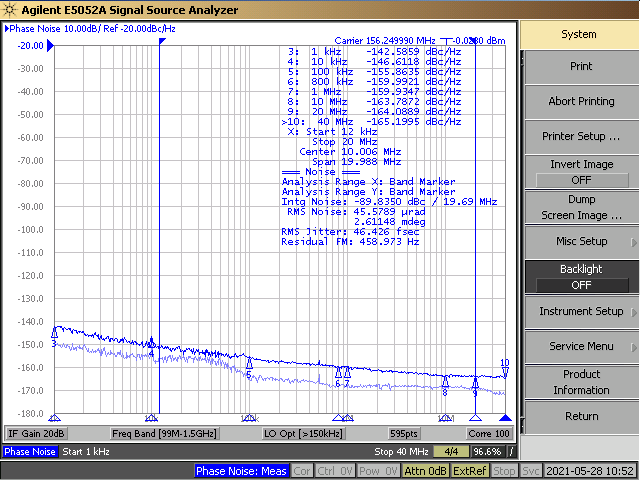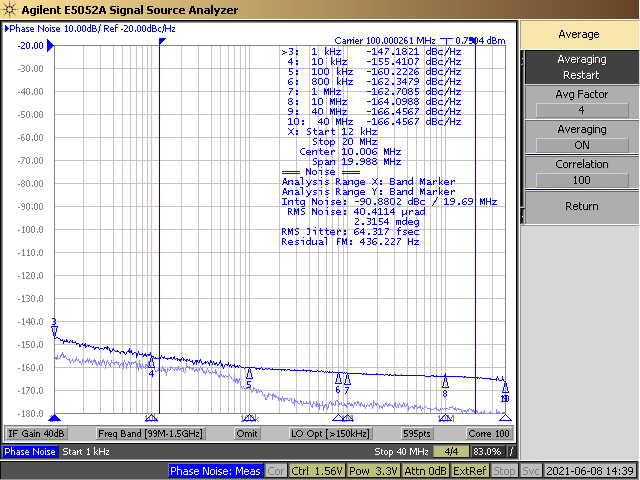JAJSO15A february 2022 – june 2023 LMK1D1208I
PRODUCTION DATA
- 1
- 1 特長
- 2 アプリケーション
- 3 概要
- 4 Revision History
- 5 Device Comparison
- 6 Pin Configuration and Functions
- 7 Specifications
- 8 Parameter Measurement Information
- 9 Detailed Description
- 10Application and Implementation
- 11Device and Documentation Support
- 12Mechanical, Packaging, and Orderable Information
10.2.3 Application Curves
The following graphs show the low additive noise of the LMK1D1208I. The low noise 156.25-MHz source with 24-fs RMS jitter shown in Figure 10-2 drives the LMK1D1208I, resulting in 46.4-fs RMS when integrated from 12 kHz to 20 MHz (Figure 10-3). The resultant additive jitter is a low 39.7-fs RMS for this configuration.

| Reference signal is low-noise Rohde and Schwarz SMA100B |
 Figure 10-3 LMK1D1208I Output Phase Noise, 156.25 MHz, 46.4-fs RMS (12 kHz to 20
MHz)
Figure 10-3 LMK1D1208I Output Phase Noise, 156.25 MHz, 46.4-fs RMS (12 kHz to 20
MHz)Figure 10-4 shows the low close-in phase noise of the LMK1D1208I device. The LMK1D1208I has excellent flicker noise as a result of superior process technology and design. This enables their use for clock distribution in radar systems, medical imaging systems etc which require ultra-low close-in phase noise clocks.
 Figure 10-4 LMK1D1208I Output Phase Noise, 100 MHz, 1-kHz Offset: –147 dBc/Hz
Figure 10-4 LMK1D1208I Output Phase Noise, 100 MHz, 1-kHz Offset: –147 dBc/Hz